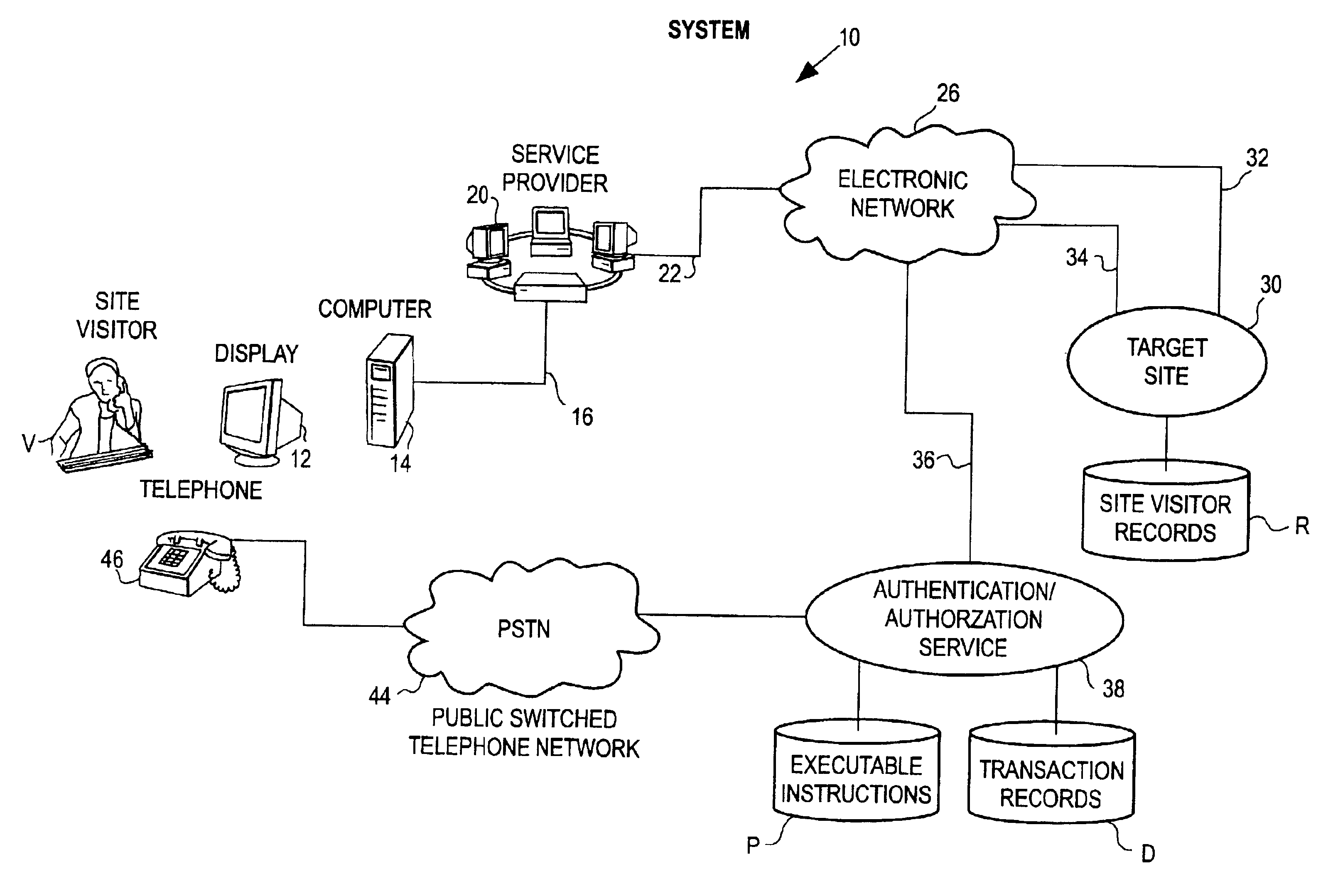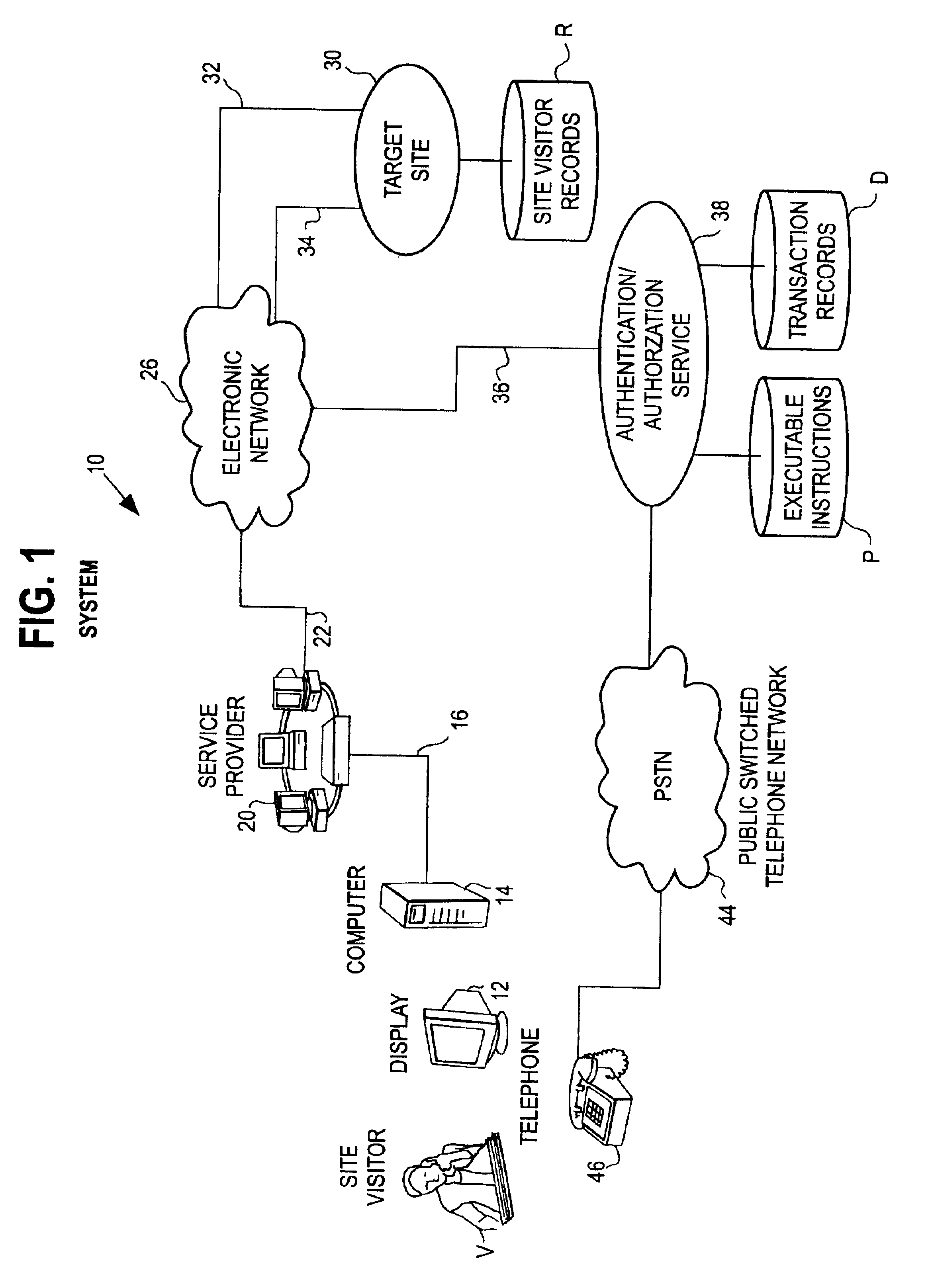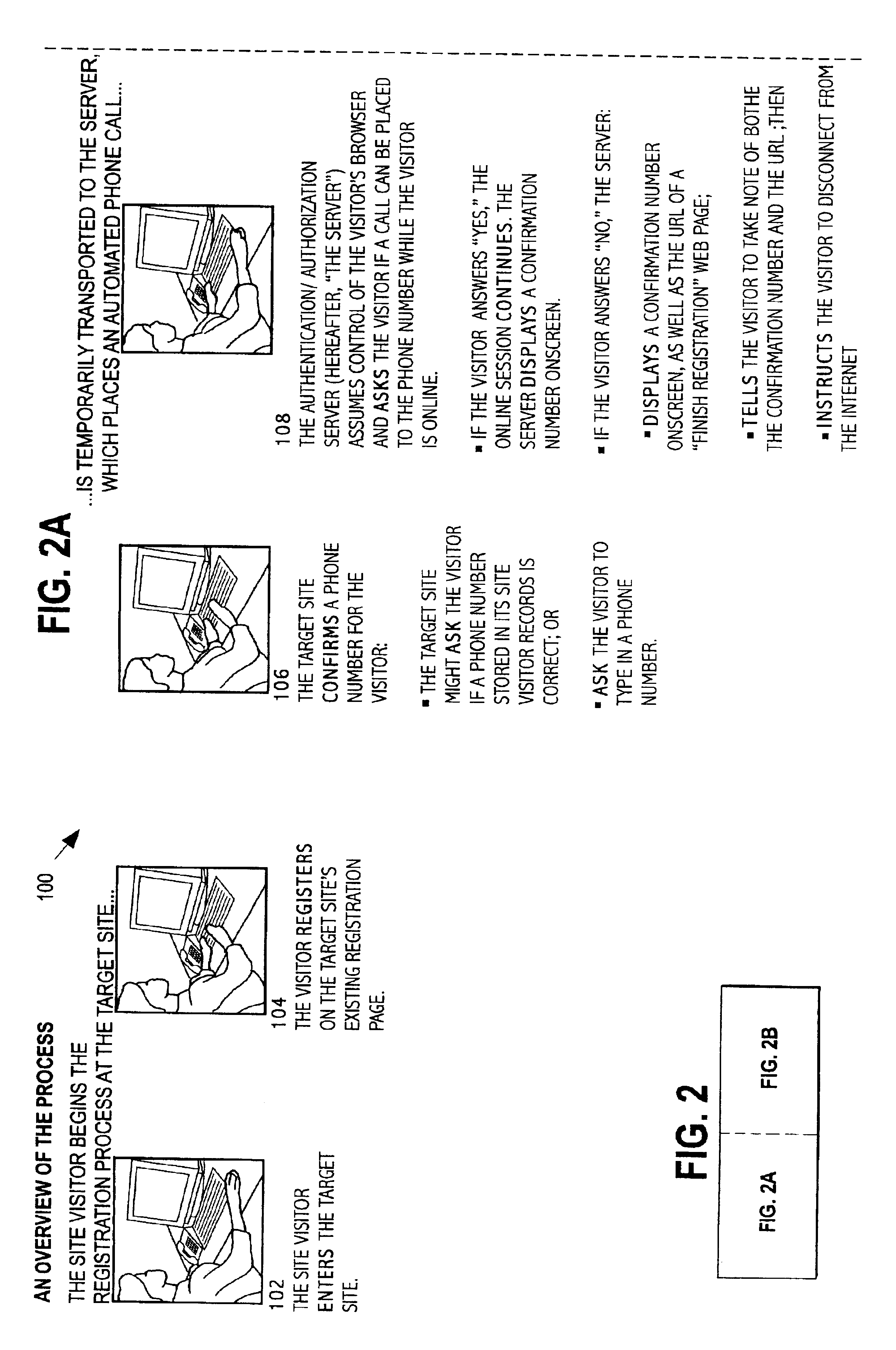System and method of using the public switched telephone network in providing authentication or authorization for online transactions
a public switched telephone network and authentication or authorization technology, applied in the field of internet security, can solve the problems of identity theft, threatening the growth of e-commerce, and the bank really has no assurance of the true identity of the entity
- Summary
- Abstract
- Description
- Claims
- Application Information
AI Technical Summary
Benefits of technology
Problems solved by technology
Method used
Image
Examples
Embodiment Construction
[0072]While this invention is susceptible of embodiment in many different forms, there are shown in the drawings and will be described herein in detail, specific embodiments thereof with the understanding that the present disclosure is to be considered as an exemplification of the principles of the invention and is not intended to limit the invention to the specific embodiments illustrated.
[0073]FIG. 1 illustrates a system 10 for carrying out an interactive, authentication / authorization process. In one aspect, system 10 as discussed below can be implemented using a multi-line approach. Alternately, a single line approach can be used.
[0074]The system 10 includes a site visitor's display 12 and associated local computer 14. The site visitor V, via a bi-directional communication link 16 can access, forward requests to and receive services from an internet service provider 20. The internet service provider 20 which would be coupled via bi-directional communication links 22 communicates ...
PUM
 Login to View More
Login to View More Abstract
Description
Claims
Application Information
 Login to View More
Login to View More - R&D
- Intellectual Property
- Life Sciences
- Materials
- Tech Scout
- Unparalleled Data Quality
- Higher Quality Content
- 60% Fewer Hallucinations
Browse by: Latest US Patents, China's latest patents, Technical Efficacy Thesaurus, Application Domain, Technology Topic, Popular Technical Reports.
© 2025 PatSnap. All rights reserved.Legal|Privacy policy|Modern Slavery Act Transparency Statement|Sitemap|About US| Contact US: help@patsnap.com



